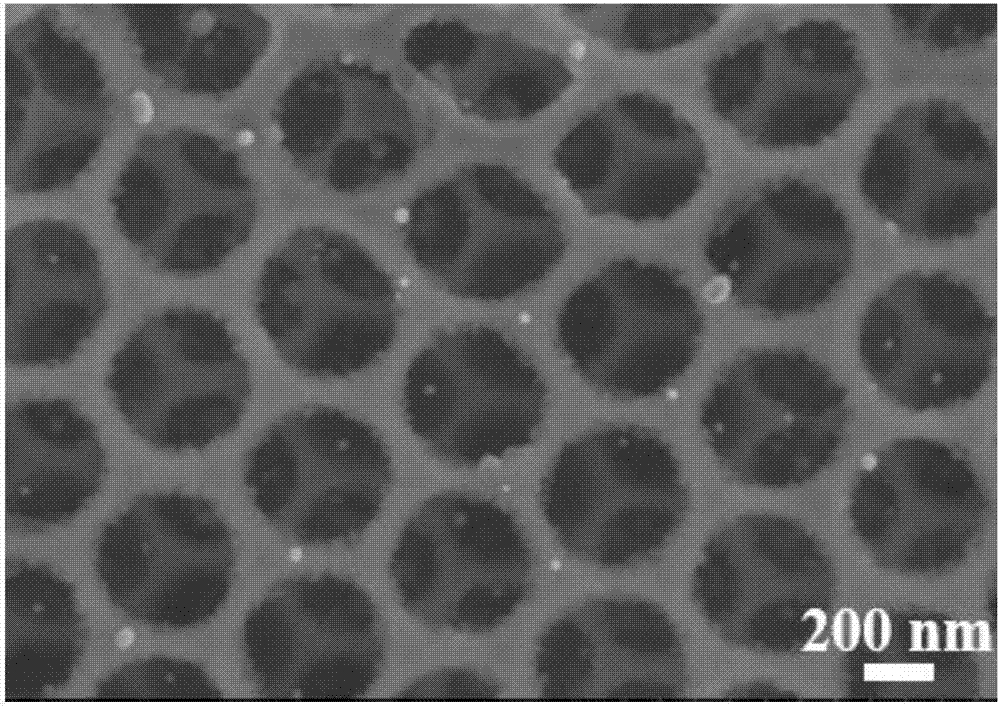Nucleic-acid aptamer type photoelectric sensor for detecting atrazine and preparation method of such nucleic-acid aptamer type photoelectric sensor
A technology of nucleic acid aptamer and photoelectric sensor, which is applied in the direction of instruments, measuring devices, scientific instruments, etc., can solve the problems of limiting the organic combination of biologically active substances and TiO2, low oxidation efficiency of titanium dioxide, and limited utilization of light, etc., to achieve photoelectricity Strong catalytic activity, improved photoelectrochemical performance, and good reproducibility
- Summary
- Abstract
- Description
- Claims
- Application Information
AI Technical Summary
Problems solved by technology
Method used
Image
Examples
Embodiment 1
[0043] The preparation method of the nucleic acid aptamer photosensor used to detect atrazine in this embodiment is as follows:
[0044] (1) Pretreatment of FTO electrodes. Before the 1.5cm×4.0cm FTO is used to prepare electrodes, it needs to undergo strict surface treatment to ensure that the surface is clean. Put the determined FTO into surfactant solution, distilled water, acetone, and absolute ethanol in order to ultrasonically clean for 15 minutes each, and then put it into deionized water to ultrasonically clean twice, each for 15 minutes. Afterwards, the FTO was taken out and dried in an air atmosphere.
[0045] (2) Self-assembled PS microsphere arrays on the surface of FTO electrodes. Put the pretreated FTO electrode vertically into 0.1wt% PS suspension, place it in an oven and dry it at 40°C, and a uniform and ordered array of PS microspheres is obtained on the FTO surface.
[0046] (3) Preparation of 3DOM TiO by sol-gel method 2 / FTO electrode. Configure TiO fir...
Embodiment 2
[0052] Photoelectrochemical detection of atrazine using the assembled nucleic acid aptamer photoelectrochemical biosensor.
[0053] Using the traditional three-electrode system to prepare Aptamer / Au NPs / 3DOM TiO 2 / FTO is the working electrode, the saturated calomel electrode is the reference electrode, the platinum wire electrode is the counter electrode, and the 0.1M PBS buffer solution containing 30mL 0.1M AA is the supporting electrolyte. A series of atrazine standard solutions with different concentrations were gradually added to the system by the standard addition method at room temperature for 30 minutes, and a bias voltage of 0.5V was applied. The current is converted into photocurrent density (j) according to the working area of the electrode. Through the analysis results, it was found that within a certain concentration range of atrazine, with the increase of the concentration of atrazine, the photocurrent density also increased correspondingly. On the electrode ...
Embodiment 3
[0055] The assembled nucleic acid aptamer photoelectrochemical biosensor was used for selection performance detection.
[0056] Aptamer / Au NPs / 3DOM TiO prepared by 2 / FTO is the working electrode, the saturated calomel electrode is the reference electrode, the platinum wire electrode is the counter electrode, and the 0.1M PBS buffer solution containing 30mL 0.1M AA is the supporting electrolyte. Apply a bias voltage of 0.5V, and use the I-t curve method to measure the photocurrent of the mixed system containing 0.01 μg / L atrazine solution and 100 times molar concentration of atrazine interfering substances under visible light excitation. Adding 0.01 μg / L atrazine will cause a rapid and obvious increase in photocurrent, but adding 1.0 μg / L trichlorfon, humic acid, PCBs, paraquat, acetamiprid, bisphenol A It did not cause obvious photocurrent changes; furthermore, adding 0.01 μg / L atrazine into the electrolyte system finally caused obvious photocurrent changes, and the interfer...
PUM
 Login to View More
Login to View More Abstract
Description
Claims
Application Information
 Login to View More
Login to View More - R&D
- Intellectual Property
- Life Sciences
- Materials
- Tech Scout
- Unparalleled Data Quality
- Higher Quality Content
- 60% Fewer Hallucinations
Browse by: Latest US Patents, China's latest patents, Technical Efficacy Thesaurus, Application Domain, Technology Topic, Popular Technical Reports.
© 2025 PatSnap. All rights reserved.Legal|Privacy policy|Modern Slavery Act Transparency Statement|Sitemap|About US| Contact US: help@patsnap.com

